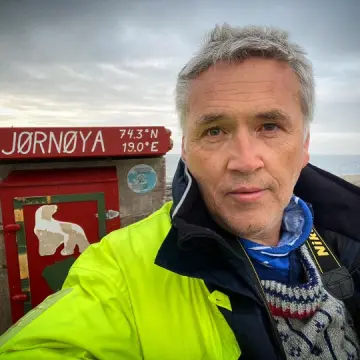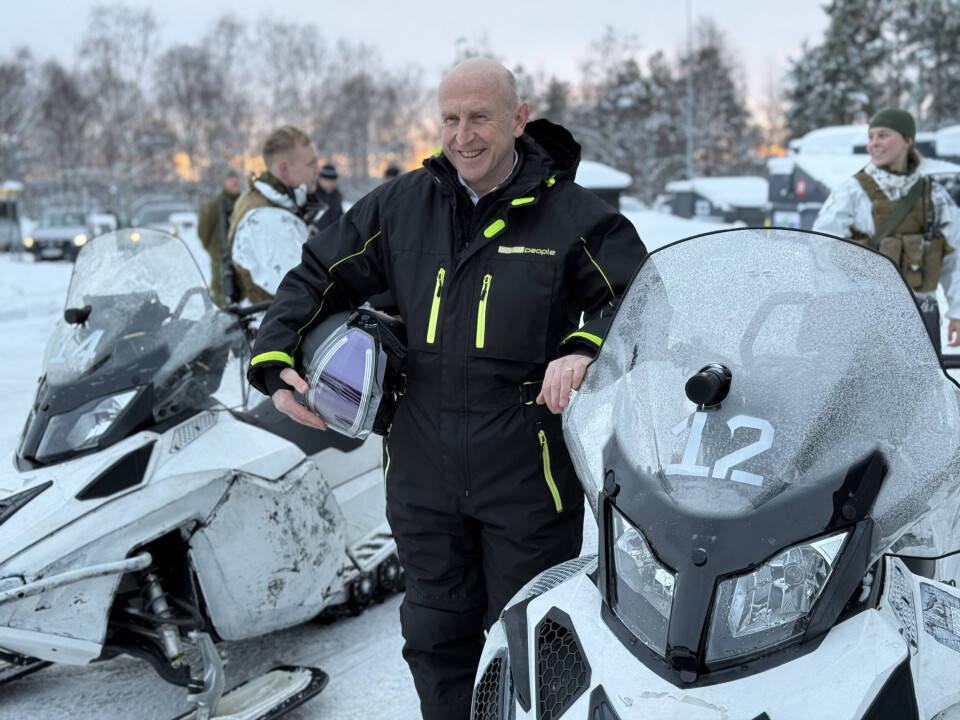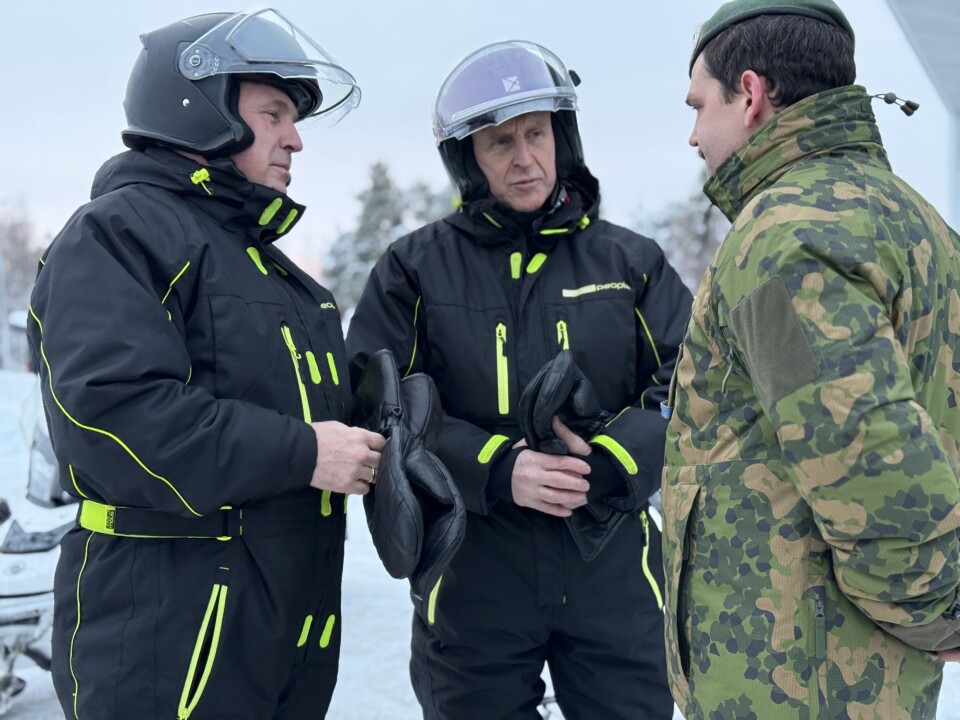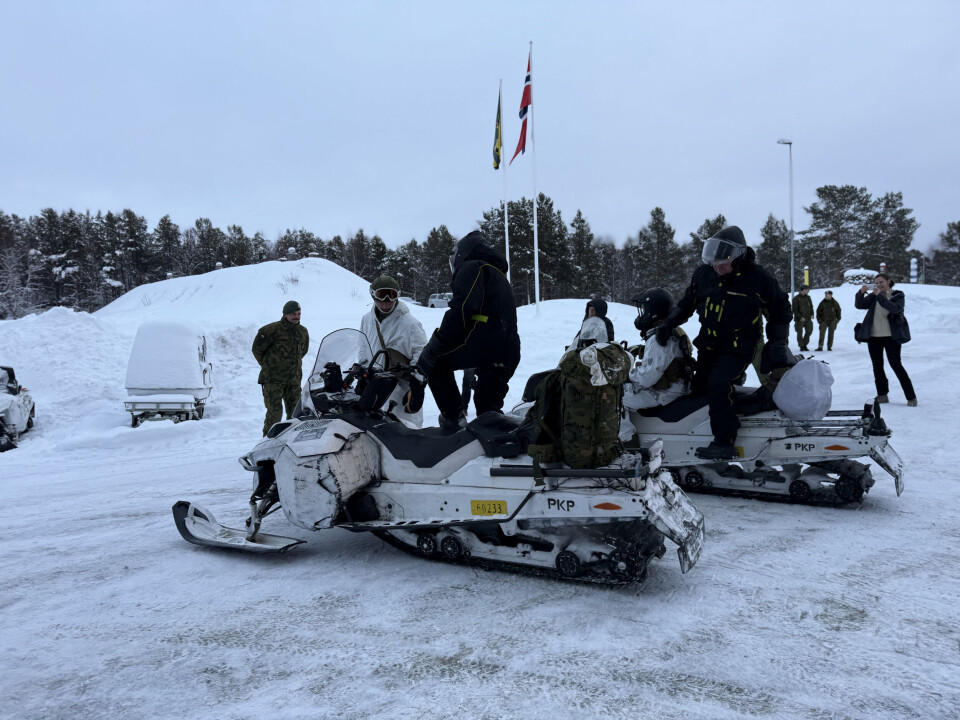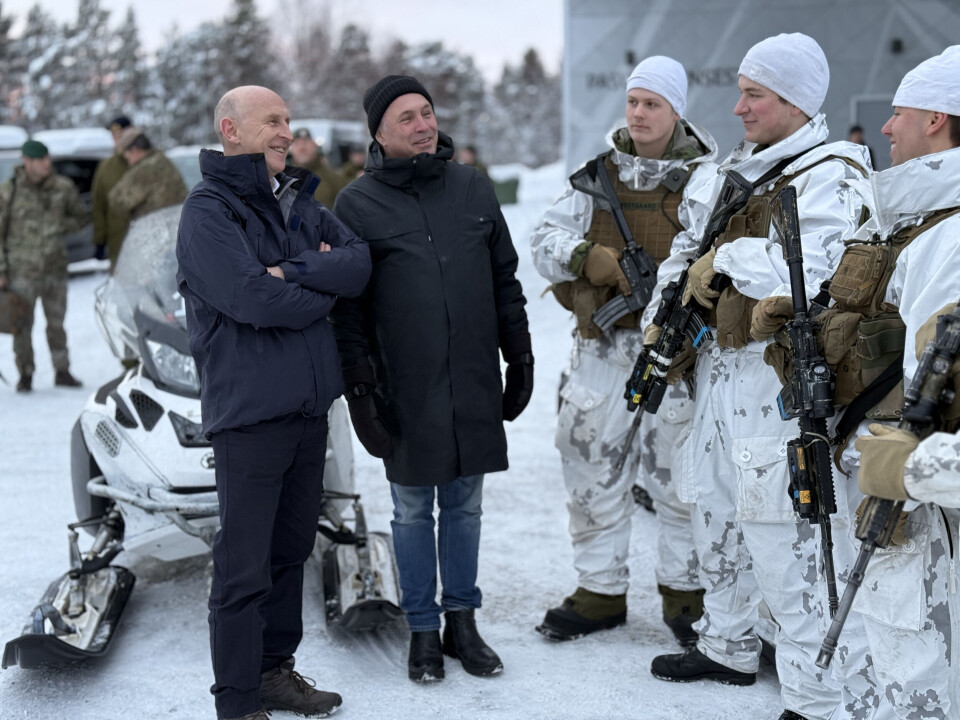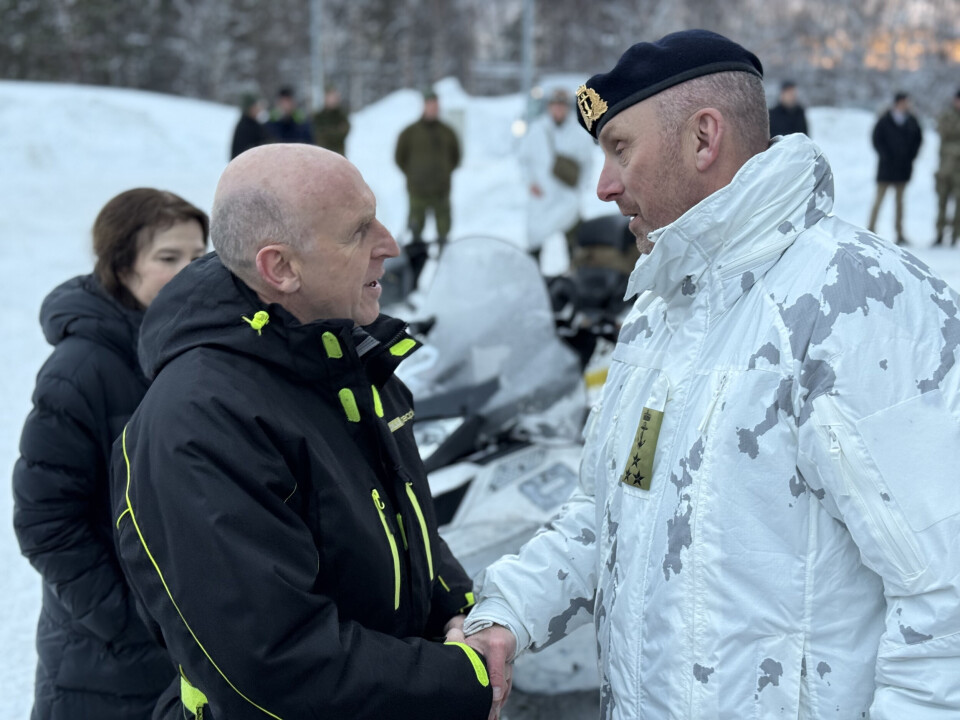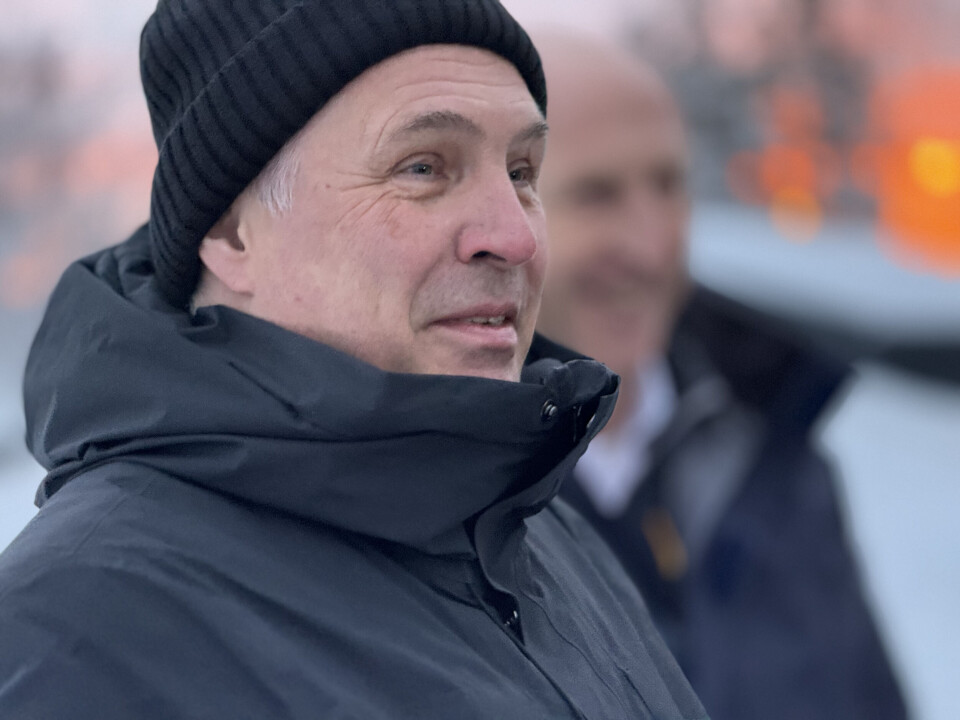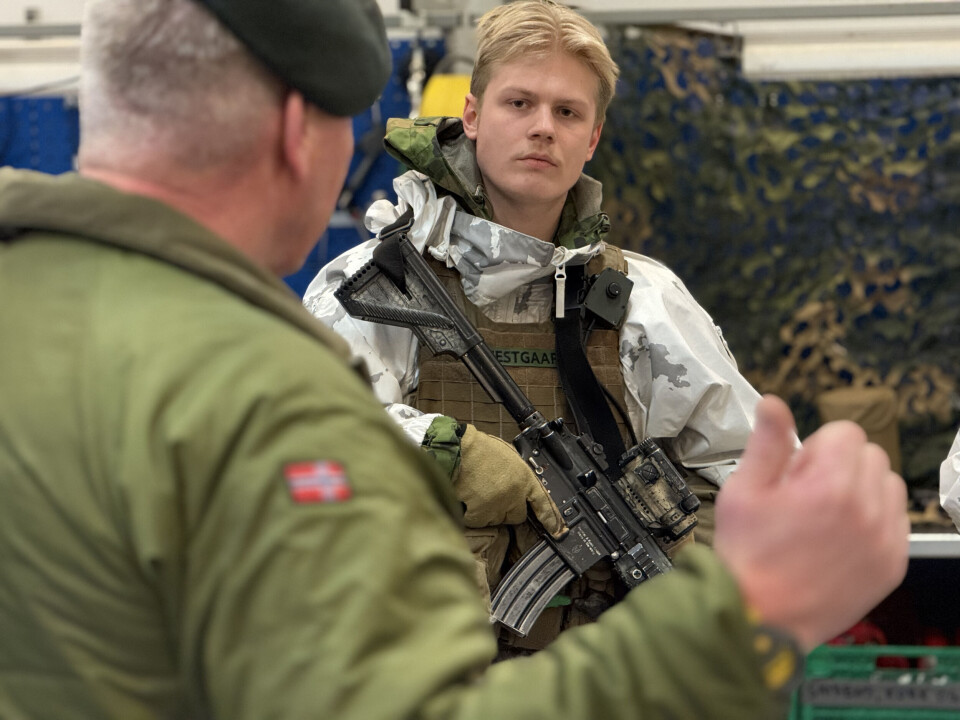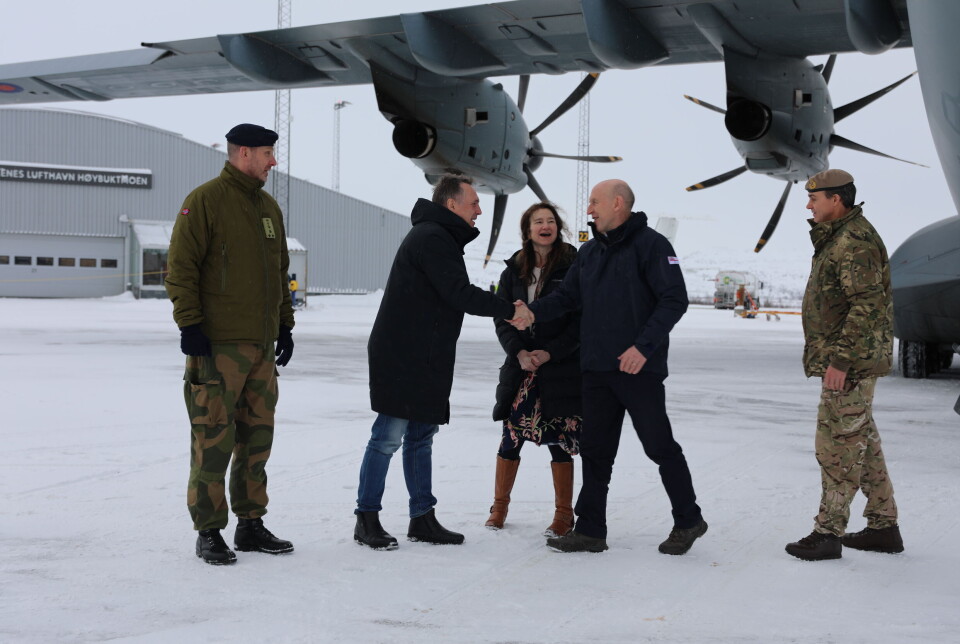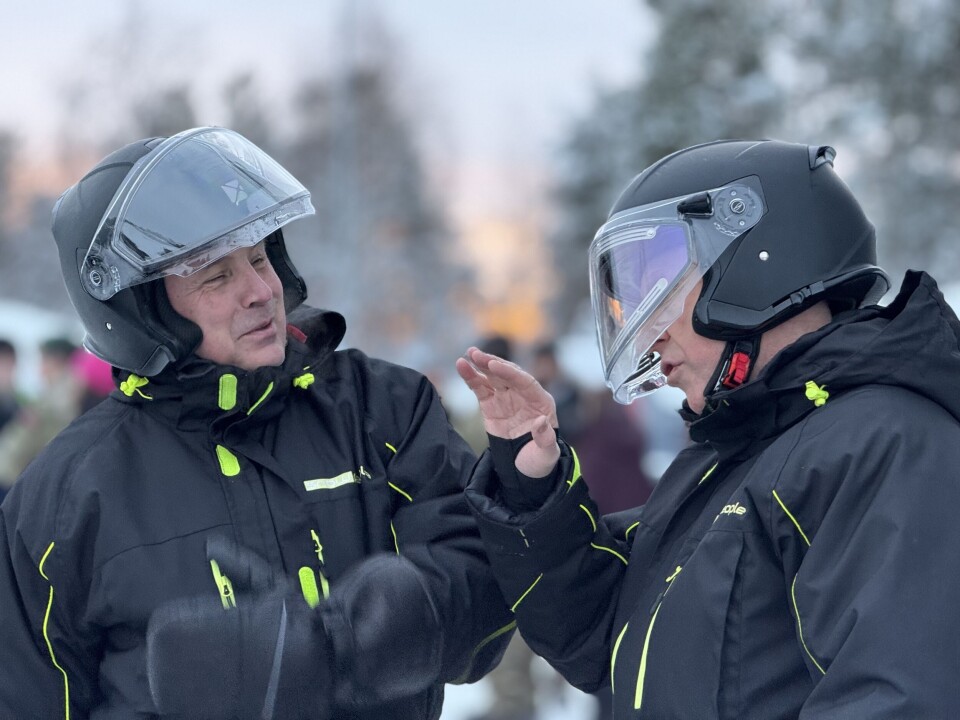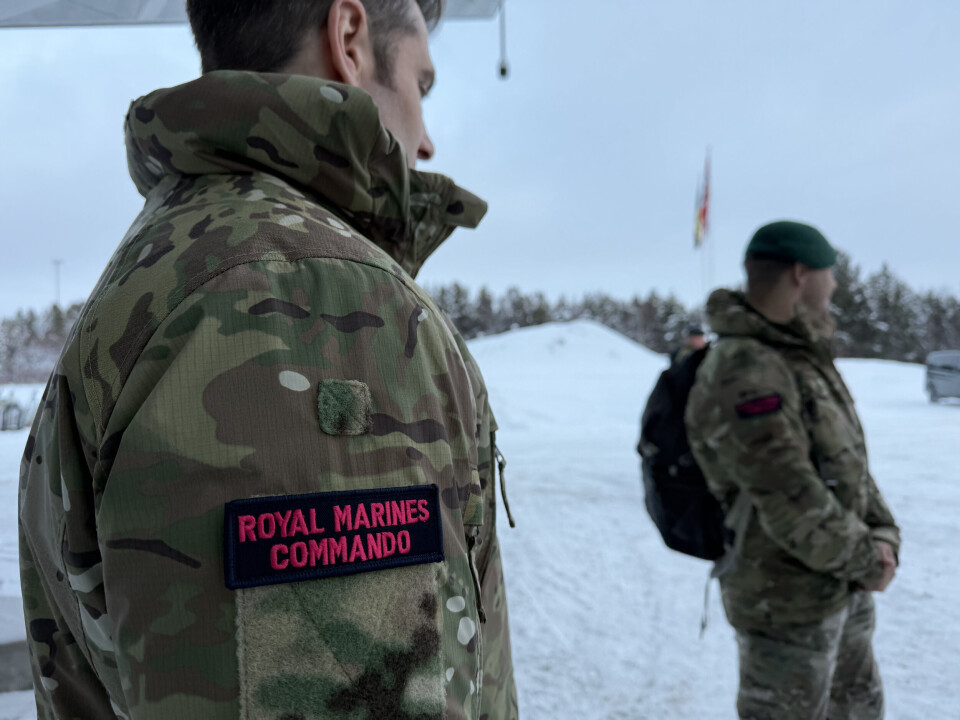
With orange sunset over the Kola Peninsula as a backdrop, UK Defence Secretary Healey came north to boost security ties with Norway
"The security of Ukraine and the security in the high north are both connected," Defence Secretary John Healey made clear.
The UK Defence Secretary’s visit to northernmost Norway happens amid European security turmoil as Donald Trump has started to mirror the Kremlin’s false narrative that Ukraine is to blame for being invaded.
Driving snowmobile on the ice along the Pasvik River that forms the Norwegian-Russian border, John Healey could on Wednesday see directly over to Pechenga, a region home to two of the brigades that have sent soldiers to their death in large numbers on the battlefields in eastern Ukraine.
Both the 200th Motorized Rifle Brigade and the 61st Naval Infantry Brigade train their soldiers near the Norwegian border before sending them off to the "meat-grinder" in Russia's barbaric war across the country's southern border.
Up north, the re-born Leningrad Military District plans to add up to 50,000 new soldiers near the borders with Norway and Finland in the coming few years.
John Healey and his counterpart Tore Sandvik are both underlining that the United Kingdom and Norway share the same security landscape in the North Atlantic where Russia poses an increased threat to European and trans-Atlantic connections.
The high north is of especial importance for British Defence Secretary who has been in office since July 2024.
"In the last year alone, 70 Royal Navy vessels have been in Norway and it is a sign of the growing importance of the work we do together, not only in the North Atlantic but also here in the high north. We are here to discuss those threats. Our two countries leads the maritime capability coalition, the maritime weaponry," John Healey said to the Barents Observer after the snowmobile ride along the Arctic border with Russia.
Healey added that the decision not to send Royal Navy warships into the Barents Sea after Russia's full-scale invasion of Ukraine was an "operational" one and not aimed at lowering tensions in waters close to the Russian Northern Fleet's ballistic missile submarines on the Kola Peninsiua.
Healey underlined that the security of Ukraine and the security in the high north are both connected.
"This is NATO's front line," the Defence Secretary said. He added: "This region reminds us that Russia is a threat well beyond Ukraine."
Russia's new 4th generation multi-purpose submarines of the Yasen-class are based a short 60 kilometers from where the two defence ministers met on Wednesday. Military officials traveling with the Healey and Sandvik to Kirkenes and the Pasvik valley confirmed that the Russian navy's new long-range hypersonic Tsirkon cruise missiles are of concern for NATO's maritime operations in the Norwegian Sea and North Sea regions.
Last month, the third of the Northern Fleet's Yasen-class submarines, the Arkhangelsk, made her first port call to Zapadnaya Litsa naval base.
Norway's new Defence Minister Tore Sandvik, who has been in office for only two weeks, said strengthening Finnmark Land Defence with a new brigade is of high importance.
Sandvik could also tell that the government is looking into possible changes in Norway's regime of self-imposed restrictions on allied NATO activities in eastern Finnmark region. The restrictions were introduced after Norway joined NATO in 1949 and is aimed at not provoking a Moscow that has its main naval nuclear assets based along the coast of the Kola Peninsula.
"It is natural that this debate now comes up, as Finland and Sweden have joined NATO," Defence Minister Tore Sandvik said to the Barents Observer.
"But this is a debate that will be well debated in the Parliament, as part of Norway's defence and security policy," he said. "It is important to balance this policy in order not to increase tensions."
In the longer run, do you think British soldiers could exercise together with Norwegians here in east-Finnmark?
"Details on where the geographical restrictions should be depends on how the security situation in all of Europe develops, and how a possible peace agreement for Ukraine will look like. But it is quite natural to have such debate now," Defence Minister Sandvik said.
He added: "Finnmark is a part of Norway that need to be defended."
The two ministers spent the day in Pasvik together with Norwegian border guard soldiers. First, they climbed a watch-tower from where the Russian town of Nikel could be seen. After the snowmobile ride along the border river, Healey and Sandvik met with conscripts at Pasvik border station and got a brief on how the young Norwegians guard NATO's northernmost land border with Russia.
The delegation continued from Kirkenes airport onboard a RAF Airbus A400M to Bodø, where Norway's Joint Headquarters is located.

